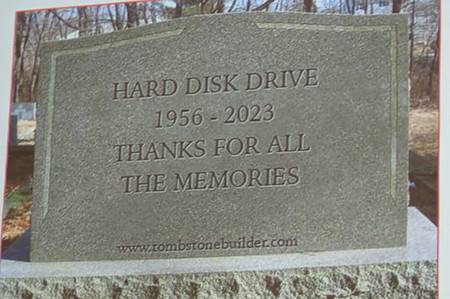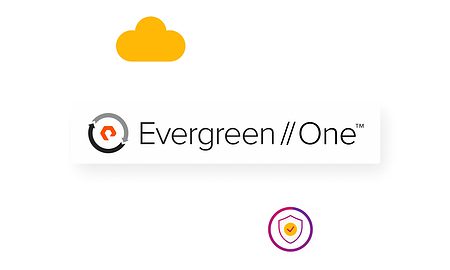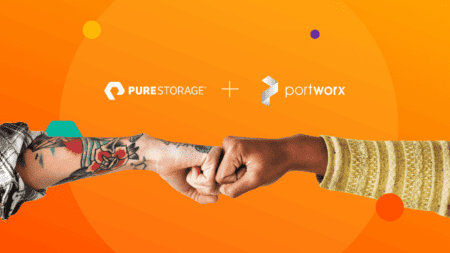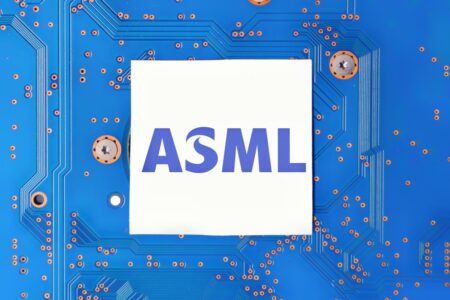It also announces a new Disaster Recovery as-a-Service (DRaaS) offering and a host of smaller but no less important updates to its portfolio. We list these in this article.
By now we know what Pure Storage’s objective is in the market. We’ve written quite a few articles about that this year alone. Simplicity and consistency play an important role in this. That’s not so easy in a world where cloud and on-prem will co-exist for a very long time, if not forever.
So many of the updates announced by Pure today are aimed at this state of affairs. “The distributed cloud is the future,” in the words of Remko Deenik, Technical Director Europe at Pure Storage. Of course, Pure has to go along with that, without abandoning the principles surrounding their portfolio. The basis of this is that Pure wants to have the most consistent portfolio possible.
We discuss updates and announcements on multiple levels in this article. The two biggest announcements can be found in the Evergreen portfolio and in the area of Disaster Recovery. There are also updates to Pure1, Pure Storage’s management environment.
Also read: Pure Storage wants to make hard drives permanently obsolete
Modern StaaS requires special commitment
Pure has a Storage-as-a-Service (StaaS) offering with Evergreen//One. This means that organizations can deploy storage spread across the various components of a modern IT infrastructure: on-prem, in colo and in the public cloud. In doing so, you only pay for what you use. Today, Pure is adding something rather special to this. It will pay the cost of power and rack space for the on-prem storage of Evergreen//One customers. In doing so, it especially wants to underscore that the company’s FlashArrays and FlashBlades take up little space and have very low power consumption. After all, these are two important pillars under every story of Pure towards the market. In doing so, Pure puts its money where its mouth is, so to speak.
According to Deenik, the expansion of Evergreen//One is an interesting addition for organizations that are seeing costs spiral out of control in the cloud. “We see quite a few customers who are growing in the cloud, but running into costs. This announcement makes it easier to move to on-prem,” he indicates.
In addition to the above announcement, Pure is also adding two SLAs to its Evergreen portfolio. These are No Data Migration and Zero Data Loss. Pure guarantees that no data ever needs to be migrated and no data will be lost as long as customers take Evergreen//One, Evergreen//Flex and Evergreen//Forever. If this does happen (and is Pure’s fault), customers get service credits in return.
Below you can see at a glance who this new offer applies to and exactly what Pure provides in return.

Pure Protect//DRaaS
Today’s second big announcement is Pure Protect//DRaaS. This is what the name suggests it is, a Disaster Recovery service. It targets VMware/vSphere environments and allows them to be easily run in a virtual environment. The idea is that this greatly reduces the time it takes to recover after any event/disaster. After all, a full copy of the environment, unaffected by the disaster, is available.
Pure Protect//DRaaS is based on technology from an acquisition Pure made last year. Deenik wouldn’t say which company it was, and nothing came out about it at the time. Of course, this is not of much interest to customers. They are primarily interested in additional protection against ransomware in particular. So this new service should provide that. Deenik promises that this service also works in a very simple manner. It protects a VMware environment in five steps, he promises.
Currently, Pure Protect//DRaaS only supports AWS EC2. Deenik says, however, that support for other hyperscalers is also underway. The solution uses VMware APIs, but does not require that VMware is also running on the other side (in the cloud). If you use VMware Cloud on AWS, for example, you do and pay double licensing fees there. You don’t have those with Pure Protect//DRaaS for the data it protects.

Finally, in the area of resilience, there is the Data Resilience Score. This gives customers an overview of the resilience of their data and the environments it resides in. Not only can they see if everything is set up properly, but tools from other vendors also report back with insights. Deenik specifically mentions Veeam and Commvault in this regard. The idea is that this way you can get the best possible overview of how resilience is doing and possibly do something about it thanks to built-in best practices.
Pure1 updates
The final component of the updates announced by Pure today are improvements to Pure1, Pure Storage’s management environment. Much here is focused on automating management, to the extent desirable and possible. For example, as a customer, you now only need to indicate once whether you want only the essential updates, or rather the balanced or proactive ones.
Furthermore, Pure has done the necessary around genealogy. For example, it is now possible to see the full “family tree” of an organization’s history with Pure. “Customers like to see this when they think about renewal,” Deenik indicates when we ask about the usefulness of such a look into the past. They can also see the improvements around power consumption and sustainability, he adds. A similar “family tree” is available for the subscriptions organizations have had and have. This gives a clear understanding of how subscriptions have grown. Pure can also provide advice based on these insights. It can do this completely transparently, because the customer also has insight into the data on which these are based.
In the area of sustainability, Pure has added a so-called Peer Rating. This allows organizations to see how they are doing in this area compared to the rest of their industry. If you would like to see how Pure is doing relative to all the SLAs it now has, you can do that too. For that, there are the Service Level Indicators. Finally, there are the Intelligent Recommendations that should provide more insight and transparency for organizations. These also partly consist of AI-driven recommendations, but there is also room for human-maintained recommendations. In this way, organizations should be able to find the right balance. It is important that these advices are sound, because they are directly related to the new investments that organizations need to make. Then it is good that it is a combination of AI and human input.
TIP: “Storage is the only industry where 10x better doesn’t convince”



















